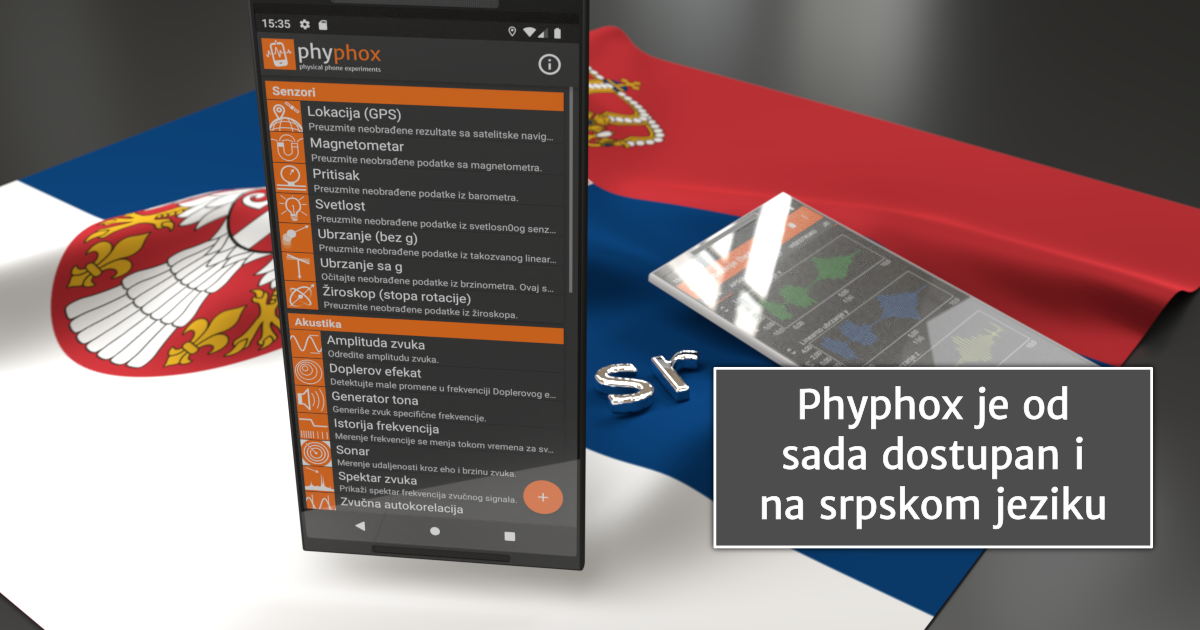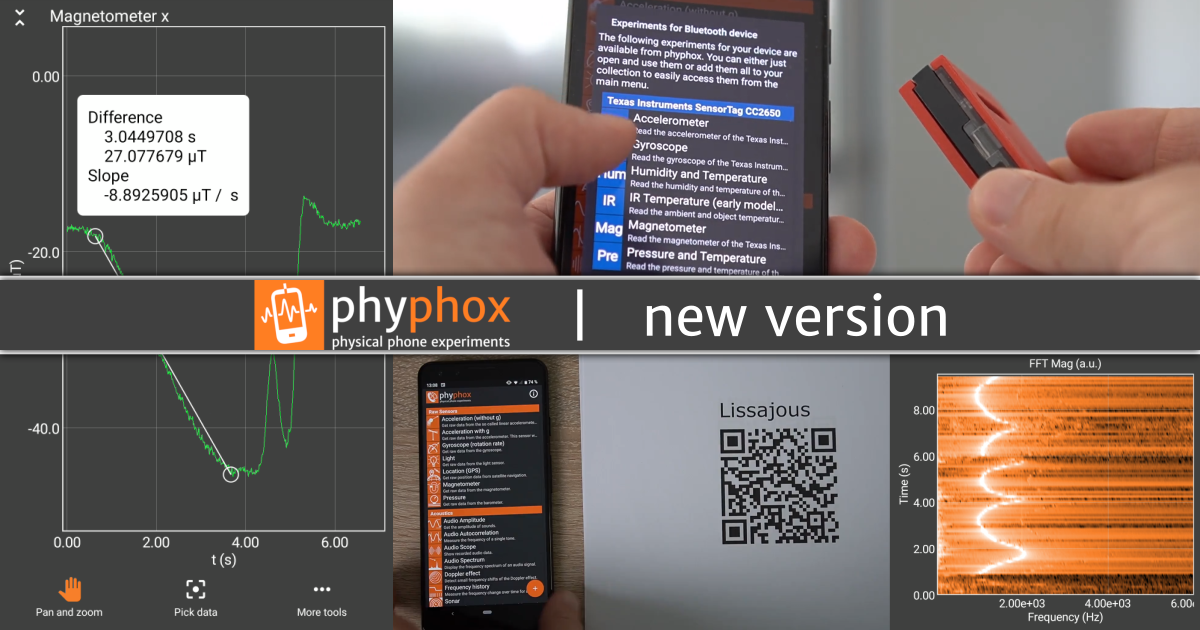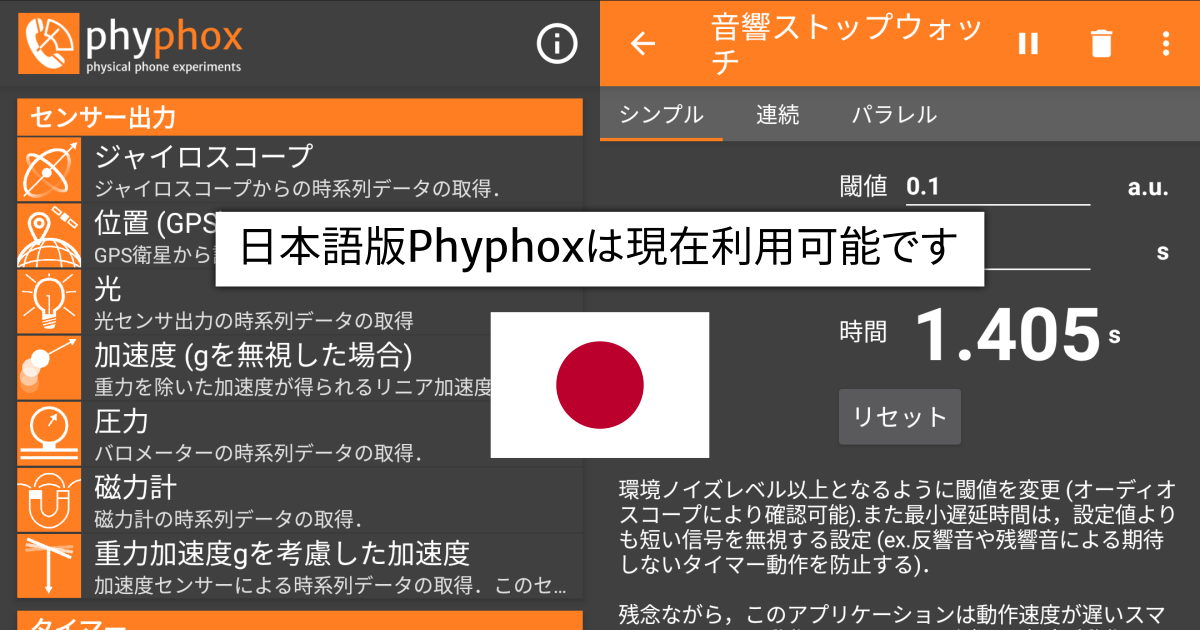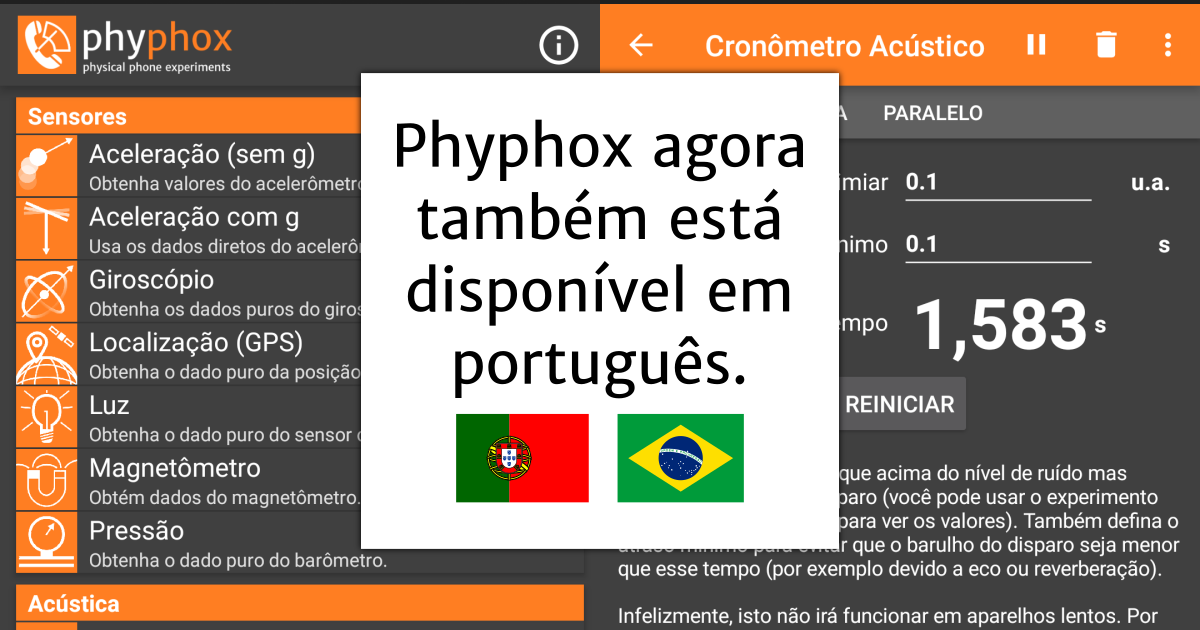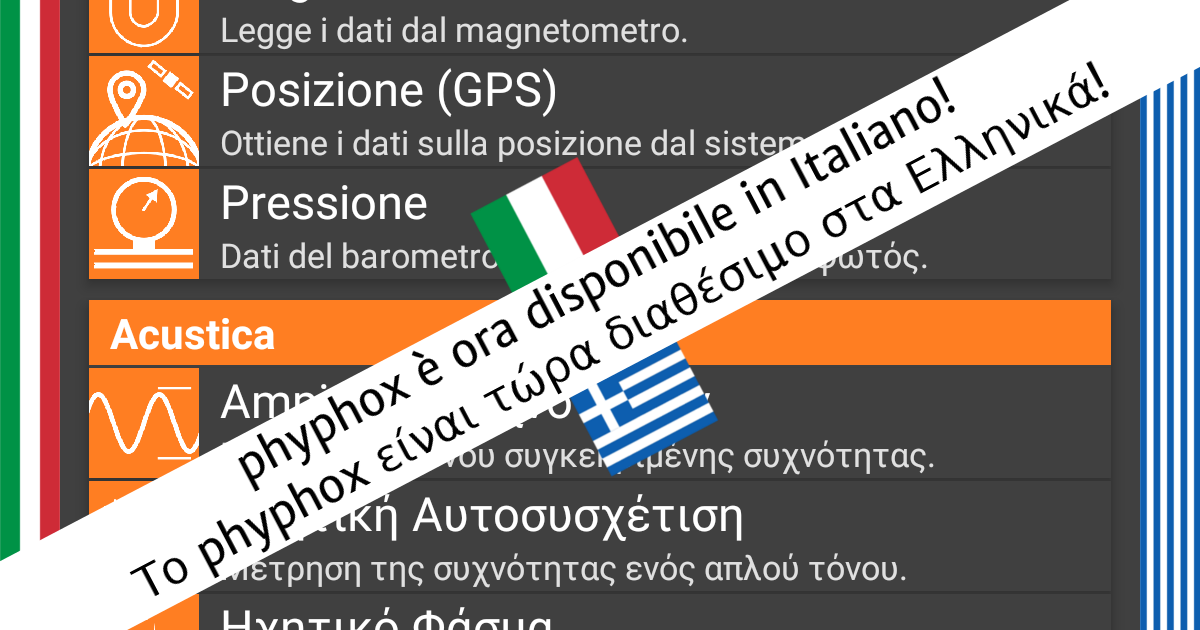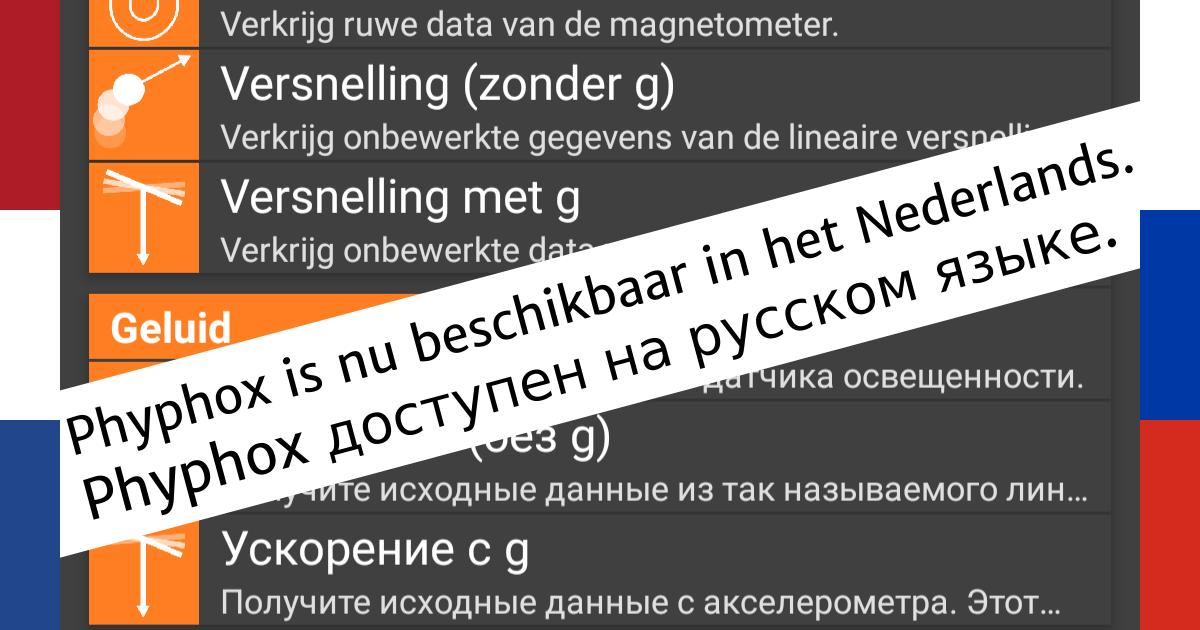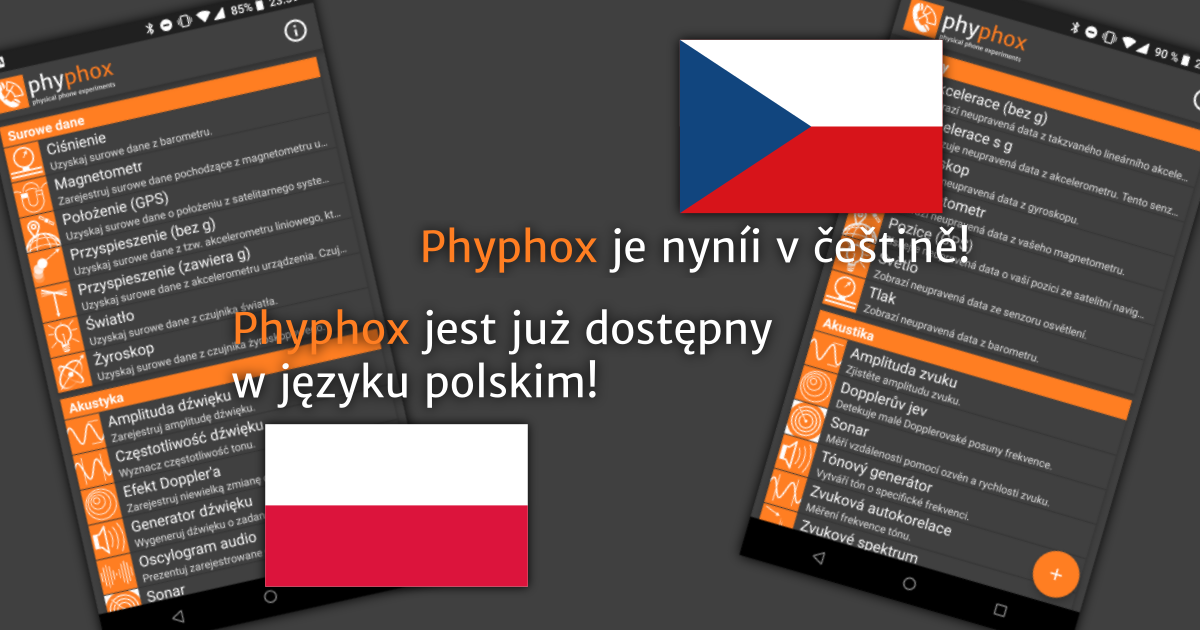We have just released a new version with quite a few improvements and fixes. But most importantly, phyphox now has a new network interface. At the moment you will only notice (at the very bottom of the main menu) that it allows you to collect some data about your sensors, which you can submit to us as we try to build a sensor database.

However, some experiments using the network interface as well as its documentation and editor support will follow soon.
Changelog
Changes on Android and iOS
- New network interface allowing to send and/or receive data to/from network services.
- New sensor db experiment, that allows you to contribute information about your device to our new (upcoming) sensor database.
- Highlight nearest BLE devices if multiple with same name are present.
- Use common time reference for multiple sensors, improving their synchronization.
- Location services (i.e. GPS) now use a database to translate elevation above the reference geoid and the WGS84 ellipsoid directly in phyphox and giving both values. This also fixes getting ellipsoid instead of geoid data on Android 10 devices.
Changes on Android
- Notify user if location service is not enabled when trying to scan for BLE devices.
- Fix attribute clash of phyphox and the web editor.
- Fix remote access problem on Android 4 devices.
- Improve title display for long titles
- Code maintenance under the hood (thanks to “TacoTheDank”)
Changes on iOS
- Fix wrong values if picking data points from logarithmic plots
- Fix applause meter losing scores
- Use advertised name of BLE devices instead of the local name buffered by iOS (for example fixing problems with Owon multimeters)
- Update BLE scan results, so changes in signal strength can be seen
- Fix analysis logic: Run analysis if input data has been changed by previous analysis run
- Fix some analysis crashes due to invalid integers
- Include EduRoom SDK (eduroom.de)
- Accept old “out” attribute for audio inputs to fix compatibility issues with older experiments
File format version 1.8
- Elements to define network interface
- autoConnect function to allow connection to BLE devices without scanning
- New formatting options for info elements: bold, italic, align and size
- New option to ignore sensor availability

